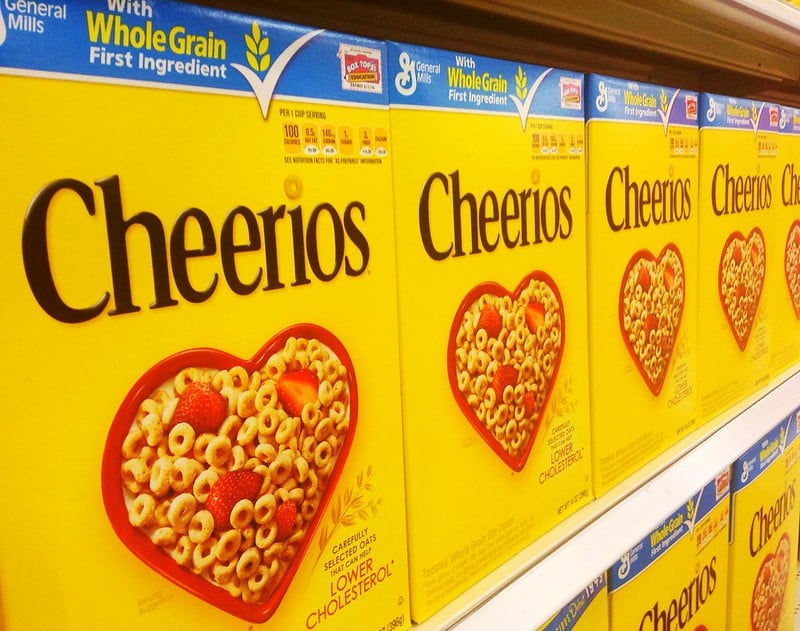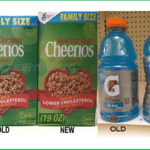
Some in the coupon industry have been predicting for years that brands will start moving away from paper coupons altogether in favor of digital-only offers. And this year, it looks like it finally may be starting to happen.
Among the country’s largest consumer brands, Procter & Gamble and Unilever still offer their very own Sunday coupon inserts, plus print-at-home coupons for many of their products. Other top brands, like Tyson, PepsiCo, Coca-Cola and Kraft Heinz have had fewer paper coupons available lately, though they’ve rarely offered very many anyway.
Mondelez, however, the maker of Nabisco snacks, used to provide coupons more frequently, but hasn’t offered a Sunday insert coupon since January. (Update: a Nabisco coupon finally appeared in the June 26th SmartSource.) Kellogg has a selection of printable coupons on its own website, yet hasn’t offered a Sunday insert coupon all year so far.
But no company’s paper and printable coupons have vanished as swiftly and as noticeably as General Mills’. While there are plenty of load-to-card digital coupons and cash-back offers available for General Mills products, the last time the company issued a coupon for any of its products in a Sunday insert was during the first week of January, and its last printable coupon featured on Coupons.com was last October.
And that’s no accident.
“General Mills has made a strategic decision to shift to more digital offers,” the company told Coupons in the News in a statement. “However, consumers can still find the value they know and expect through a variety of digital outlets. In fact, we are introducing more coupons and incentives across the marketplace than we did last year.”
The company’s newfound preference for digital over paper coupons makes it perhaps the largest consumer brand so far to make that shift, especially when you consider how ubiquitous its paper offers once were.
It wasn’t that long ago when you could open your Sunday newspaper or a printable coupon gallery and see plenty of offers for brands like Cheerios, Pillsbury, Yoplait, Old El Paso, Betty Crocker and more. Like P&G and Unilever, General Mills once offered its own company-specific coupon inserts from time to time, while some of its brands even offered their own dedicated printable coupon pages. And some of the company’s coupons appeared on Coupons.com so often that it became something of a joke – one coupon blogger, advising readers to print the best offers before they disappeared, once implored her readers, “please don’t print any Pillsbury rolls coupons, they will be there forever.”
But they’re not anymore. General Mills brands’ dedicated printable coupon pages are also history, and the General Mills-branded coupon inserts are long gone as well. There is, however, a good selection of digital coupons for General Mills products available on various retailers’ websites and apps, and cash-back offers on Ibotta. Even more, as the company said, than there used to be.
So that’s great if you prefer digital. Among longtime couponers, there are still plenty of digital detractors who don’t like the way things are headed and prefer paper coupons. But the numbers don’t lie. Last year, Inmar Intelligence reported that digital load-to-card coupons surpassed newspaper insert coupons in popularity, for the first time ever. Digital coupons represented 29.3% of all coupons used, while insert coupons’ once-dominant share dropped to 28%.
Some of the paper coupon pullback has to do with supply chain issues, and difficulties in keeping products on the shelves. Coupons in newspaper free-standing inserts (FSIs) have a far longer lead time, so some manufacturers have scaled back for now, to avoid issuing coupons for products they can’t keep in stock.
But with newspaper distribution continuing to decline, and Coupons.com about to be retired – not to mention the personalization and tracking ability digital coupons offer that paper coupons don’t – it is perhaps inevitable that other consumer packaged goods (CPG) companies will be looking at making a permanent shift from print-at-home and FSI coupons to digital-only coupons. It’s certainly been predicted for some time now. It was more than two years ago when the then-CEO of Coupons.com owner Quotient Technology said he had been told by some “top CPGs, making up over 20% of all FSI coupon distribution, that they are planning to exit the FSI entirely during the course of 2020.”
If that indeed happened in 2020, few consumers seemed to notice. But it’s a lot more noticeable now.
Regardless of the format, coupons are certainly welcome in the current economic climate. In remarks at a recent consumer and retail conference, Jon Nudi, president of General Mills’ North America Retail organization, acknowledged that “our prices are up significantly versus a year ago,” following several rounds of price increases due to inflation and supply chain issues. But “our goal,” he said, “is to keep our products as affordable as possible for consumers.”
So if you’re looking to save some money on Cheerios, or Pillsbury, or Yoplait, or any other General Mills brand, the savings are out there – as long as you know where to find them. If you’re still a paper coupon fan, you’ll just have to get used to clicking instead of clipping. Either way, though – it sure beats paying full price.
Image source: JeepersMedia











Omitting paper coupons is a BIG problem for seniors……Many, many seniors do not use a phone or computer and will not be able to save’money….They need the savings more than anyone….
I know many seniors who still use house phones and can’t afford or
use computers…. The seniors are certainly a large number of your
customers..